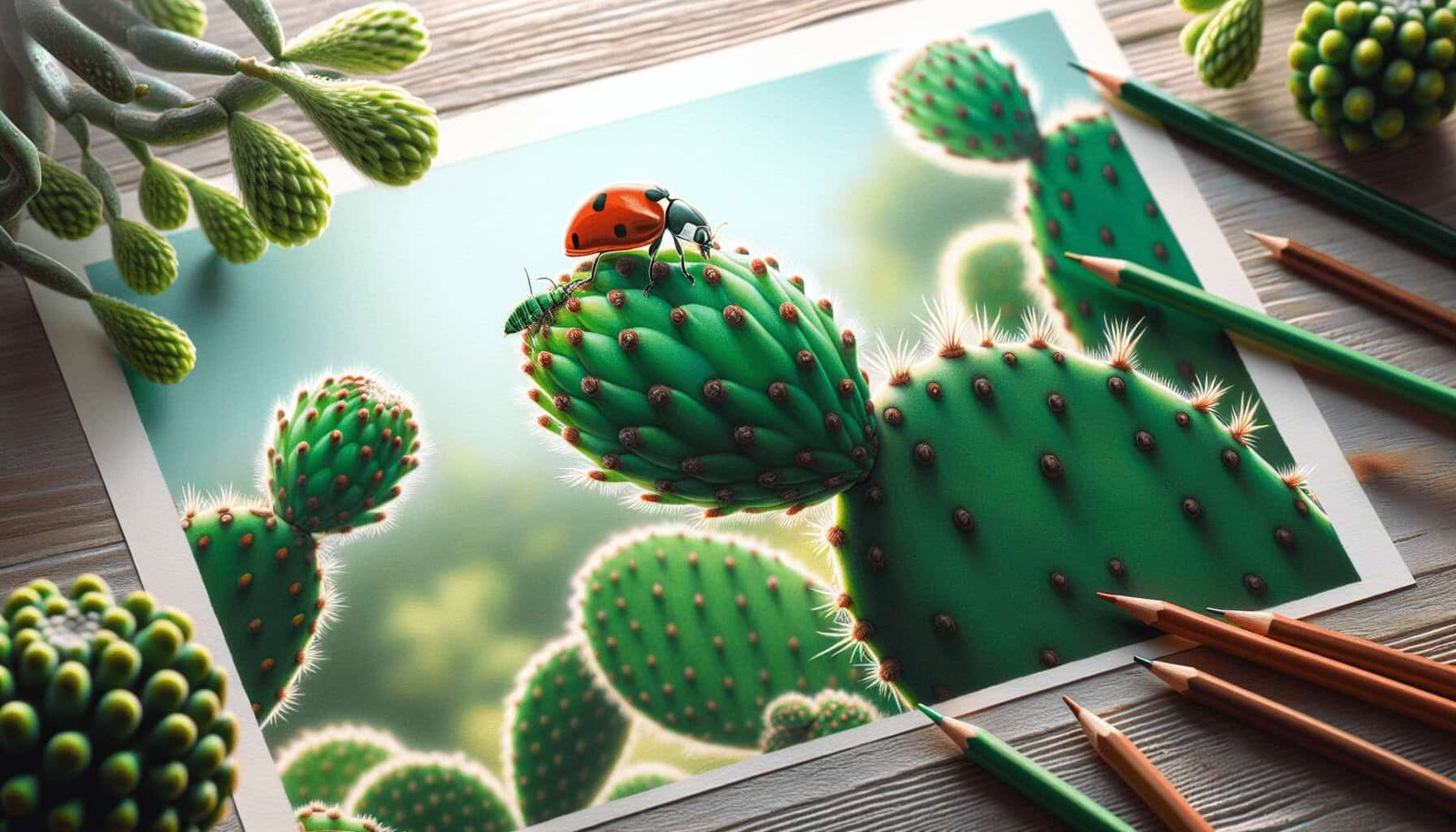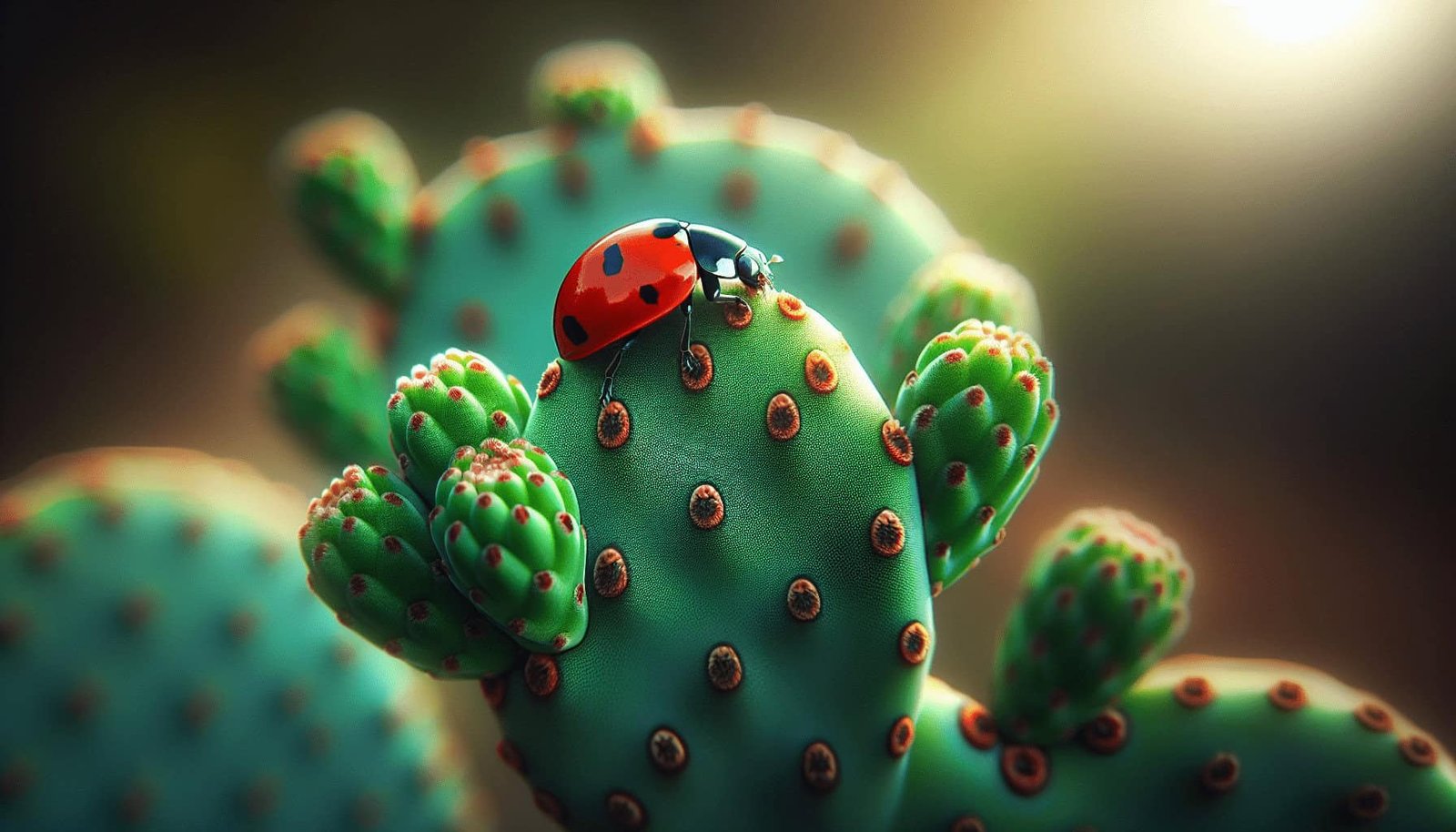Welcome to our exploration of the advantages of employing natural predators for pest control in nopal, that versatile cactus often seen in gardens and farms. By harnessing the power of nature, you can protect your nopal crops from harmful pests without relying on chemical pesticides. This method promotes a healthier ecosystem, ensures the sustainability of your soil, and can even save you money in the long run. Let’s dive into the myriad benefits of embracing these tiny, yet mighty allies in your pest management strategy. Have you ever wondered about the benefits of using natural predators for pest control in nopal? If you’re growing nopal, also known as prickly pear cactus, pest control is likely one of your primary concerns. You might have experimented with various pesticides and chemicals, only to find them ineffective or harmful to the environment. Similarly, you probably want to steer clear of methods that might compromise the quality of your plants or bring more harm to beneficial insects and other creatures in your garden.
Let’s delve into the fascinating world of natural predators and how they can be used to manage pests in nopal cultivation effectively. This approach not only helps keep your cactus garden healthy but also promotes a more sustainable agricultural practice.

What Is Nopal?
Before diving into pest control, let’s take a moment to understand what nopal is. Nopal refers to the pads of the Opuntia cacti, particularly Opuntia ficus-indica. Nopal is native to Mexico and is widely recognized for its nutritional and medicinal benefits. Additionally, it is used in numerous culinary dishes and has a growing market as a dietary supplement.
It thrives in arid and semi-arid climates, and while it is relatively hardy, it is not immune to pests. Therefore, managing pests effectively is vital to ensure the health and productivity of nopal plants.
Common Pests Affecting Nopal
Understanding the common pests that affect nopal is crucial for implementing effective pest control measures. Here are some of the common pests you might encounter:
1. Cochineal Scale
Cochineal scale insects attach themselves to the cactus pads and suck out the plant juices, causing significant damage. These tiny pests are covered with white, cotton-like wax, making them easy to spot.
2. Aphids
Aphids are small, sap-sucking insects that can colonize in large numbers on the tender parts of the cactus, like new growths, leading to stunted development and the transmission of plant viruses.
3. Mealybugs
Mealybugs, much like aphids, suck sap from the plant, weakening it and potentially transmitting diseases. They are identified by their white, waxy coating.
4. Spider Mites
Spider mites are minute arthropods that can cause stippling on the cactus pads, leading to yellowing and premature leaf drop if not controlled.
Understanding these pests and their impact on nopal plants sets the stage for exploring natural pest control solutions.
Why Use Natural Predators?
Utilizing natural predators for dealing with pests provides numerous benefits. It’s a method rooted in leveraging the ecosystem to maintain balance and control pest populations.
Environmental Benefits
Natural predators do not introduce harmful chemicals into the environment. This means that soil health, water quality, and biodiversity are preserved. Beneficial insects and organisms in the ecosystem remain unharmed, and there’s no risk of pesticide residue making its way into human or animal food chains.
Cost-Effective
While the up-front cost of purchasing predators or creating an environment suitable for them might be higher than simply spraying pesticides, the long-term savings make it worthwhile. Natural predators can reproduce and sustain their population, offering ongoing pest control without additional investments.
Sustainable and Long-Term Solution
Chemical pesticides often result in pest resistance over time, rendering them less effective. Natural predators, however, adapt along with their prey, providing a sustainable and long-term solution to pest control.
Safer for Farmers and Consumers
Unlike chemical pesticides, natural predators pose no risk to human health. They make the farming process safer for those who work with the plants and ensure that the end product is free from harmful residues for the consumers.
Types of Natural Predators for Nopal Pests
Ladybugs (Ladybird Beetles)
Ladybugs are voracious eaters of aphids, making them an excellent choice for controlling these pests. One ladybug can consume up to 50 aphids per day.
Lacewings
Lacewing larvae are known as “aphid lions” due to their appetite for aphids. They also prey on mites, mealybugs, and other soft-bodied pests.
Parasitic Wasps
Certain species of parasitic wasps lay their eggs inside the bodies of pests like aphids and caterpillars. Once the eggs hatch, the larvae consume the pest from within, effectively controlling their population.
Predatory Mites
Predatory mites can be used to control spider mites. They feed on the spider mites and their eggs, reducing their numbers effectively.
Green Lacewings
Green lacewings are particularly effective against aphids, caterpillars, and mealybugs. They lay their eggs on plants, and upon hatching, the larvae feed on nearby pests.
The table below summarizes the types of natural predators and the specific pests they control:
| Natural Predator | Target Pests |
|---|---|
| Ladybugs | Aphids |
| Lacewings | Aphids, mites, mealybugs |
| Parasitic Wasps | Aphids, caterpillars |
| Predatory Mites | Spider mites |
| Green Lacewings | Aphids, caterpillars, mealybugs |

How to Introduce Natural Predators to Your Nopal Garden
Step-by-Step Guide
Integrating natural predators into your nopal garden involves several steps to ensure their effectiveness:
Identify the Pests Confirm the species of pests present in your nopal garden to select the appropriate natural predators.
Timing Introduce natural predators when pest populations start to increase but have not yet caused significant damage.
Release Follow the guidelines provided by suppliers for releasing the natural predators. This often involves spreading them evenly throughout the infested areas.
Habitat Create a habitat that supports the natural predators, including diverse flowering plants to provide additional food sources and shelter.
Monitor Continuously monitor the pest and predator populations to assess effectiveness and make adjustments as necessary.
Creating a Supportive Habitat for Natural Predators
To keep your natural predators thriving, it’s essential to create a conducive environment. Here are some tips:
Diverse Plantings
Interplant your nopal with a variety of flowering plants to provide nectar and pollen for the adult stages of your predatory insects.
Shelter
Ensure there are areas with shelter, such as ground covers or mulches, where predators can hide and overwinter.
Avoid Broad-Spectrum Pesticides
Avoid using chemical pesticides as they do not discriminate between pests and beneficial insects. If absolutely necessary, opt for targeted organic options.

Case Studies and Success Stories
Success in Mexico
In regions of Mexico, farmers have successfully utilized the natural predator Dactylopius opuntiae (the cochineal insect feeder) to manage cochineal scale insects. This has significantly reduced the number of pests without the harmful impact of synthetic insecticides.
California’s Nopal Farmers
In California, lacewings have been introduced to control aphid populations in nopal farms. The result has been healthier plants and a thriving nopal market, free from the damages caused by aphids.
Additional Tips for Effective Natural Pest Control
Regular Monitoring
Frequent audits of your nopal plants for pest and predator populations will help you spot any issues before they become unmanageable.
Integrated Pest Management (IPM)
Combine the use of natural predators with other biological control methods such as traps, barriers, and organic pesticides to enhance effectiveness.
Educate Yourself
Obtain knowledge from reliable sources about the lifecycle, behavior, and habitat needs of both your pests and predators for more informed decision-making.
Collaborate With Other Farmers
Share insights and experiences with fellow farmers. Sometimes, local knowledge and cooperative efforts can lead to better pest management practices.

The Future of Natural Pest Control in Nopal
Innovations and Research
Ongoing research into biological pest control continues to provide new insights and options. Scientists are exploring more effective ways to breed and introduce natural predators, and there’s increasing interest in sustainable agricultural practices.
The Role of Technology
Technology such as drones and artificial intelligence can help monitor pest populations and deploy natural predators more effectively. These advancements are likely to make natural pest control even more efficient and cost-effective.
Consumer Awareness
As consumers become more aware of the benefits of organic and sustainably produced food, the demand for pesticides-free nopal will rise. This shift can encourage more farmers to adopt natural pest control methods, contributing to a healthier and more sustainable agriculture sector.
Conclusion
Using natural predators for pest control in nopal not only offers an environmentally friendly solution but also proves to be cost-effective, sustainable, and safe for both farmers and consumers. The introduction of beneficial insects such as ladybugs, lacewings, and parasitic wasps can significantly reduce the need for chemical pesticides, ensuring the health of your nopal plants and the surrounding ecosystem.
By understanding the types of pests and appropriate natural predators, creating supportive habitats, and continually monitoring pest populations, you can maintain a thriving nopal garden. The future of pest control in nopal farming is promising, with ongoing research and technological advancements paving the way for even more efficient and effective practices.
So, the next time you spot pests on your nopal plants, consider reaching out to their natural enemies for help. It could be the best decision you make for your garden and the environment!


